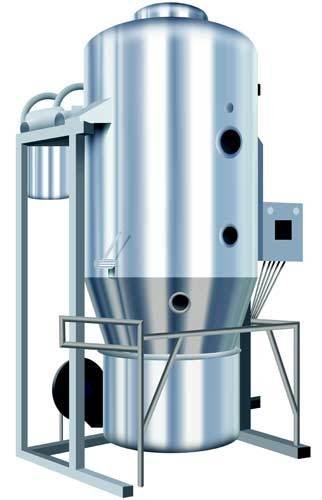In the world of bulk powder processing, the efficient removal of moisture from powders and granules is a critical step in ensuring the quality and shelf life of the final product. Fluid bed drying is one of the most widely used techniques for this purpose, offering numerous benefits over traditional drying methods. It is particularly valuable in industries like pharmaceuticals, food production, and chemicals, where consistency and efficiency are paramount. This article explores the key benefits of fluid bed drying and why it is an essential technology in bulk powder processing.
What is Fluid Bed Drying?
Fluid bed drying is a process where a stream of hot air is passed through a bed of fine particles, causing them to be suspended in the air stream. This results in the particles behaving like a fluid, allowing them to be efficiently heated and dried. The fluid bed dryer consists of a chamber where the material is placed and fluidized by air or gas. The process can be adjusted by controlling the airflow, temperature, and humidity of the air, making it a highly adaptable method for various applications.
1. Uniform Drying
One of the primary advantages of fluid bed drying is its ability to provide uniform drying of bulk powders. In traditional drying methods, such as tray drying or rotary drying, the heat distribution can be uneven, leading to inconsistent moisture removal and potential degradation of the product. In contrast, the fluid bed dryer ensures that each particle is exposed to the hot air stream, which results in a consistent drying effect throughout the material. This uniformity is essential in industries where product quality and consistency are critical, such as in the pharmaceutical and food sectors.
The ability to achieve uniform drying also reduces the risk of over-drying or under-drying the material, both of which can affect the product’s properties. Over-drying can lead to a loss of valuable nutrients or active ingredients, while under-drying can cause mold growth or other forms of contamination. By ensuring consistent moisture removal, fluid bed drying helps prevent these issues, resulting in a more stable and reliable product.
2. Improved Heat Transfer Efficiency
Fluid bed drying offers excellent heat transfer efficiency. The process of fluidization maximizes the surface area of each particle exposed to the hot air stream, allowing for faster and more effective drying. This is particularly beneficial when working with materials that have a low thermal conductivity, as the enhanced heat transfer ensures that moisture is efficiently evaporated from the particles.
Moreover, fluid bed dryers operate with high thermal efficiency, meaning they require less energy to achieve the desired drying effect compared to other methods. The hot air is recirculated within the system, which reduces heat loss and lowers energy consumption. This can result in significant cost savings for manufacturers over time, particularly when processing large quantities of material.
3. Gentle Drying Process
For certain sensitive materials, such as pharmaceutical powders or heat-sensitive food products, the drying process needs to be as gentle as possible to preserve the integrity of the product. Fluid bed dryer offer a distinct advantage in this regard, as they provide a controlled and gentle drying environment. The ability to adjust the air temperature and flow rate ensures that the material is not exposed to excessively high temperatures that could degrade its quality.
The fluidized bed also helps prevent mechanical damage to delicate particles, which can occur in traditional dryers that rely on mechanical agitation or tumbling. This makes fluid bed drying an ideal choice for materials that need to retain their structure, such as granules used in tablet manufacturing or powders used in food processing.
4. Scalability and Versatility
Another key benefit of fluid bed drying is its scalability and versatility. Fluid bed dryers can be easily scaled up or down depending on the production volume, making them suitable for both small-scale and large-scale operations. The modular design of fluid bed dryers allows manufacturers to adjust the capacity as needed, which is particularly useful for companies experiencing fluctuating demand or those who wish to expand their production capacity without significant capital investment.
Fluid bed dryers are also highly versatile and can be used for a wide range of materials, including powders, granules, crystals, and even some liquids. This flexibility allows manufacturers to use a single drying system for multiple applications, which can help streamline production processes and reduce equipment costs. Furthermore, fluid bed dryers can be integrated with other processing steps, such as coating or granulation, further enhancing their efficiency and versatility.
5. Reduced Processing Time
The efficient heat transfer and uniform drying capabilities of fluid bed dryers result in shorter processing times compared to traditional drying methods. The high air flow and particle suspension allow for rapid moisture evaporation, reducing the overall drying time and increasing throughput. This is particularly advantageous in industries where speed and efficiency are critical to meeting tight production schedules.
By reducing processing times, fluid bed drying can also contribute to lower labor and operational costs. Faster drying means that equipment can be turned around more quickly, increasing the overall production capacity and allowing manufacturers to meet higher demands without additional investment in infrastructure or labor.
6. Better Control and Automation
Fluid bed dryers offer superior control over the drying process, which is essential for maintaining product quality and consistency. Many modern fluid bed dryers are equipped with advanced sensors and automation systems that monitor parameters such as air temperature, humidity, and airflow. These systems can automatically adjust the conditions within the dryer to optimize the drying process, ensuring that the material is dried to the desired moisture content.
The ability to precisely control the drying process also makes fluid bed dryers ideal for producing products with strict specifications, such as in pharmaceutical manufacturing. Automated control systems can help maintain these specifications consistently, reducing the risk of human error and ensuring the highest product quality.
Conclusion
Fluid bed drying is an efficient, versatile, and gentle drying method that offers numerous benefits for bulk powder processing. Its ability to provide uniform drying, improve heat transfer efficiency, and reduce processing times makes it a preferred choice in industries where product quality, consistency, and cost-effectiveness are critical. Additionally, its scalability and automation capabilities make it an ideal solution for both small and large-scale operations. As industries continue to prioritize efficiency and quality, fluid bed drying will remain a key technology in the processing of bulk powders and granules.



